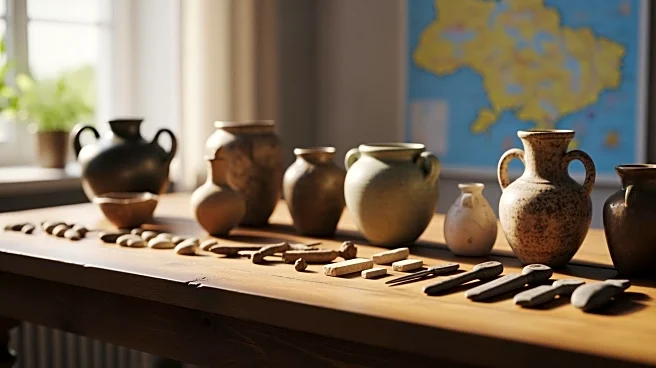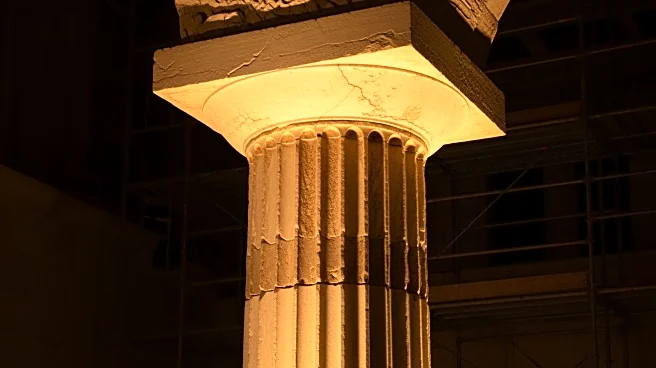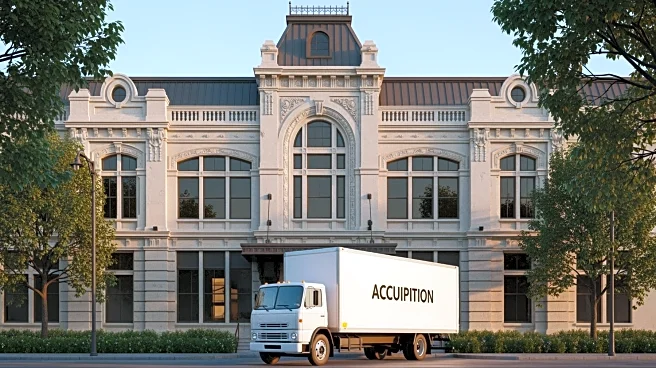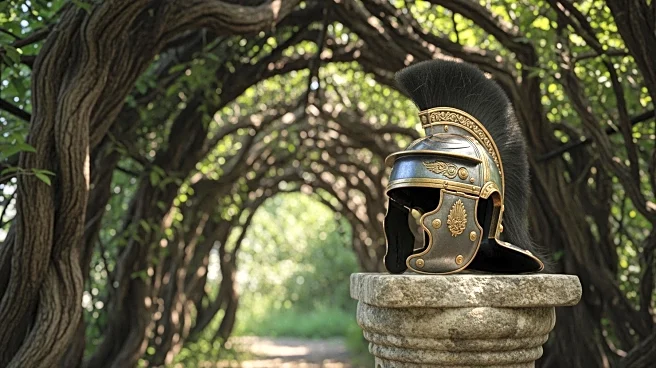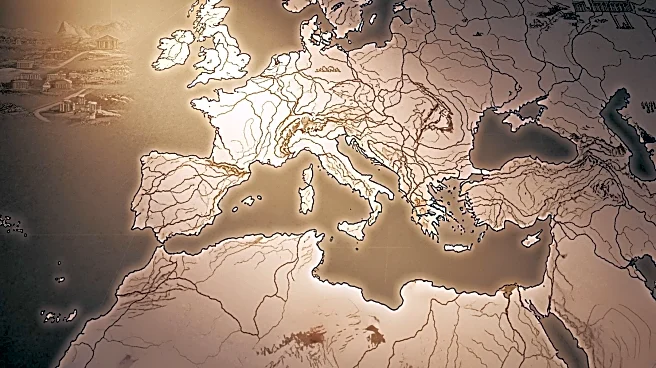What's Happening?
An ancient box tomb at All Saints Church in Martock, Somerset, collapsed, exposing a large underground crypt believed to date back to the 1700s. The incident occurred on Saturday afternoon, just before
Remembrance Sunday services. The collapse created a 12-foot hole, likely caused by rain eroding the soil and foundations, according to Rev Paul Fillery. The Martock Parish Council, responsible for the churchyard's maintenance, has secured the site with safety barriers. The crypt's Ham stone walls were revealed, a material now quarried only in two active areas at Ham Hill in Somerset. The tomb's inscription is no longer readable due to the damage. The church, built over several centuries, has parts dating back to the 13th century, with significant rebuilding in the 15th and 16th centuries.
Why It's Important?
The collapse of the tomb at All Saints Church highlights the challenges of maintaining historical sites, especially those with structures dating back several centuries. This incident underscores the importance of regular inspections and maintenance to prevent such occurrences, which can pose safety risks to visitors and disrupt community events. The exposure of the crypt also offers a unique opportunity for historical and archaeological study, potentially providing insights into burial practices and materials used in the 1700s. The event has attracted visitors, indicating public interest in historical preservation and the cultural significance of such sites.
What's Next?
The church and Martock Parish Council are collaborating with the diocese to determine the best course of action for repairs and ensuring the site's safety. Expert advice will guide the process, and the area will remain secured until essential repairs are completed. The incident may prompt further assessments of other historical structures in the area to prevent similar occurrences. The church may also consider additional measures to protect its historical assets, potentially involving more frequent inspections or restoration projects.
Beyond the Headlines
The collapse raises questions about the long-term sustainability of preserving historical sites, especially in regions prone to weather-related erosion. It highlights the balance between maintaining historical integrity and ensuring public safety. The event may lead to discussions on funding and resources needed for the upkeep of such sites, as well as the role of local councils and communities in preserving their cultural heritage.


